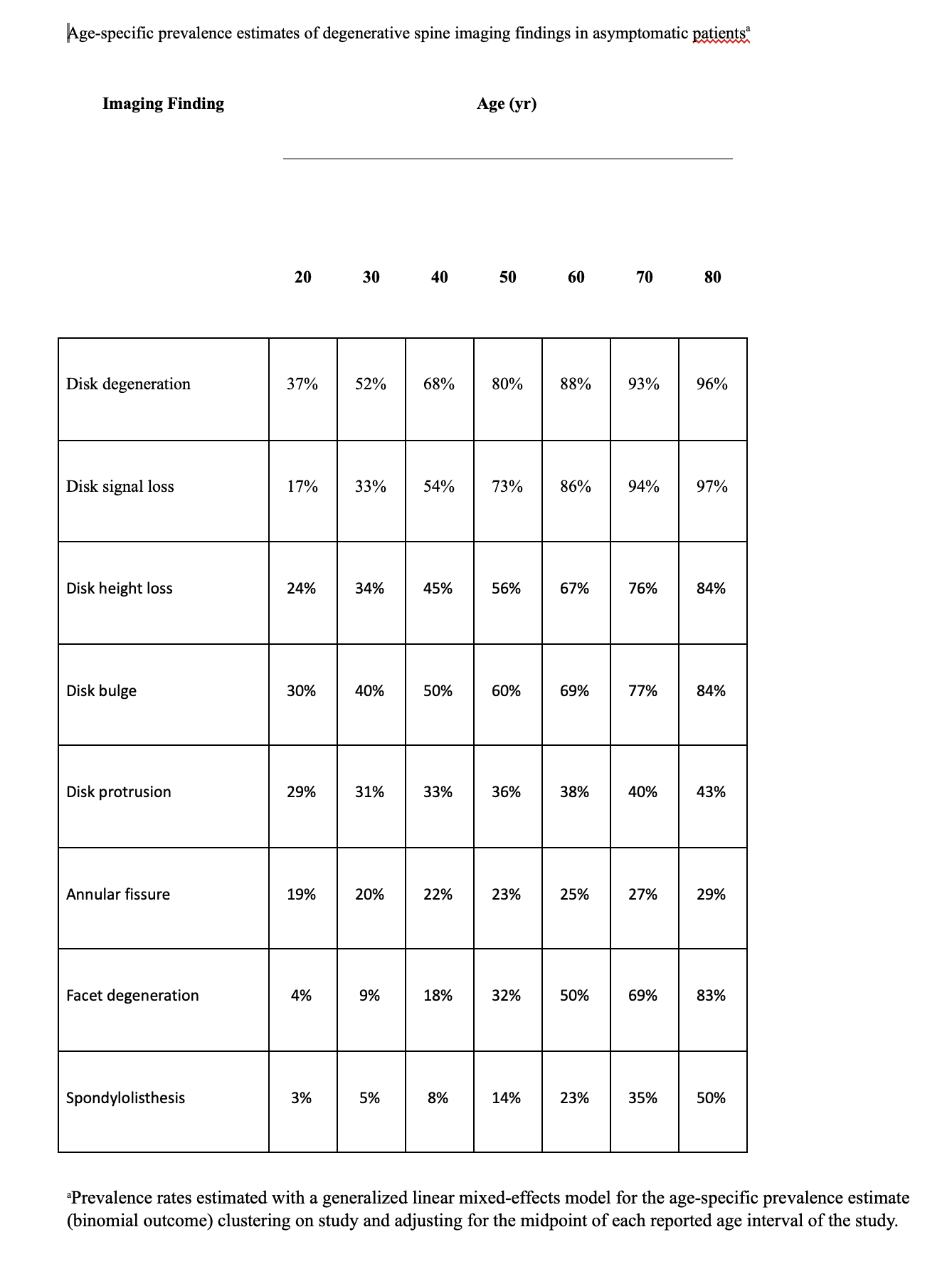Magnetic resonance imaging for the back (yes or no?)
An estimated 80-85% of the global population will have back pain at some point in their lives. The vast majority would have non-specific back pain, i.e. the source of the pain is unknown!
Yes, UNKNOWN. As a result, the back is the most complex area of the body to treat and analyse as a physiotherapist or other health care professional specialising in orthopaedic injuries. In case of doubt, patients are referred to an imaging centre for testing. Magnetic resonance imaging is the medical examination of choice for the back. It does not appear to be dangerous to health, but it is very dangerous to the wallet...
Magnetic resonance imaging (MRI) for the back (physio) is very expensive!
If the expense is justified, there would be no problem, however, it is almost useless for back problems! Disc dysfunctions, facet arthritis, herniated discs are very common problems in adults.
Here is an interesting table on asymptomatic backs versus structural changes observed under magnetic resonance. (W.Brinkikji et al. 2015). Out of 3110 asymptomatic patients, age 20-80 :
The results of this table show that disc disease and facet changes are increasingly common with age without being dangerous for the individual, since all participants are asymptomatic. Imaging only gives images without anamnesis and should only be prescribed in case of emergency (presence of red flags or suspicion of serious pathologies).
Finally, the MRI findings may cause kinesiophobia in patients, i.e. fear of movement. Kinesiophobia could slow down the progression of patients!
Motion is lotion!
Physio Summum Brossard,
Interesting fact: Most of the abnormalities identified on MRI are poor predictors of recovery for low back pain.
Reference :
D.Rao et al (2018). The use of Imaging in the management of low back pain
W.Brinjikji et al (2015).Systematic literature review of imaging features of spinal Degeneration in Asymptomatic populations.


